Who can help constantly picking up and cuddling adorable little babies? As new mommies, we probably find ourselves putting the baby’s comfort before our own. However, all that picking up, holding, and feeding can take a toll on our wrists and thumbs. This condition is known as Mommy’s Wrist.

Are You a New Mum with Severe Wrist Pain? It Might Be Mommy’s Wrist.
Mommy’s Wrist is a painful condition that affects tendons on the thumb side of the wrist. It is most likely caused by repetitive strain and movement. It is called Mommy’s Wrist because Mums can be more susceptible to this type of wrist pain. This is due to the many new tasks and movements which our hands have not become accustomed to, such as picking up and holding our new bundles of joy.
This condition is also known as DeQuervain’s Tenosynovitis. Many people who perform repetitive tasks with their hands and wrists may develop this condition. Activities that overwork the wrist and thumb such as golf, texting, or gardening may also exacerbate this painful wrist problem.
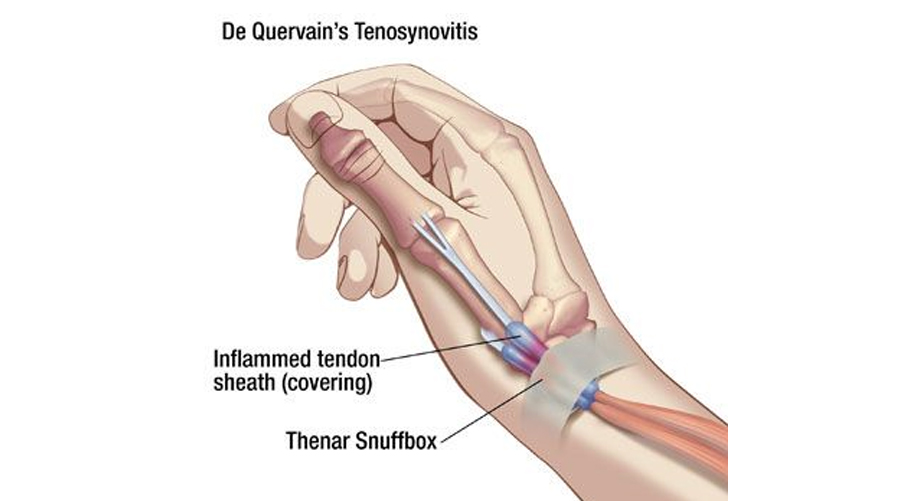
Mums may be even more prone to Mommy’s Wrist. Additionally, Mums are constantly busy and may be breastfeeding. This means that Mums may not be able to receive some of the common treatment options such as resting the thumb and wrist in a rigid splint or taking certain anti-inflammatory medications.
Common Symptoms of Mommy’s Wrist
- The pain of Mommy’s Wrist can be quite severe and debilitating. For some, the pain is sharp and may occur suddenly. In other cases, the pain is dull, and the onset is progressive.
- With Mommy’s Wrist, there may be swelling and tenderness at the base of the thumb, where the thumb attaches to the wrist. This is where the tendons are that are affected by Mommy’s Wrist.
- The pain of Mommy’s Wrist may be recognised by difficulty grabbing, twisting, and holding objects.
- There may be a sensation of snapping or locking on the thumb side of the wrist.
- Motion may be restricted due to the pain associated with Mommy’s Wrist.
A Simple Way to Test for Mommy’s Wrist
A doctor may conduct a Finkelstein Test to establish if wrist pain at the base of the thumb is Mommy’s Wrist, DeQuervain’s Tenosynovitis, or other hand or wrist ailments. This simple provocative test helps to diagnose this wrist condition and determine what stage the condition is at. Once the diagnosis is confirmed, the doctor is then able to provide the appropriate treatment plan.
When to See a Doctor About Wrist Pain
In many cases, it is important to see your doctor about your wrist pain promptly. A doctor can provide a proper diagnosis and treatment plan. A doctor may also provide recommendations and referrals to a higher level of care.
You may be referred to a hand and wrist specialist, who treats and manages conditions which have failed to respond to simple treatment measures.
See a doctor if:
- The wrist pain is severe without any sign of trauma or injury.
- There is difficulty moving your wrist or trouble holding, grasping, or twisting objects.
- A feeling of loss of sensation or numbness in the wrist, thumb, or fingers is present.
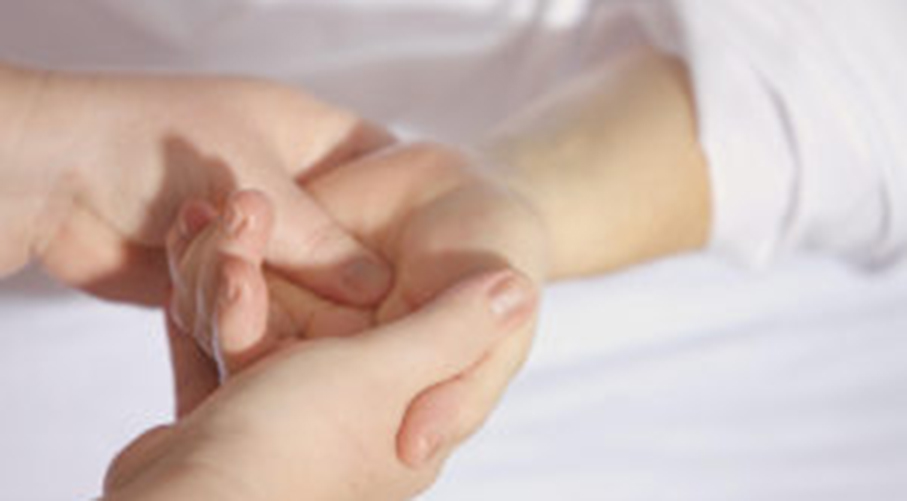
Potential Causes of Mommy’s Wrist
Mommy’s Wrist may be caused by the repetitive strain from constantly picking up and holding babies. Women are up to four times more likely to have Mommy’s Wrist, but other caregivers who are picking up babies and toddlers may also develop similar symptoms.

Mommy’s Wrist is also found more often in people aged 30 to 50 years of age. In addition to baby-related activities, many other activities may strain these wrist tendons at the base of the thumb.
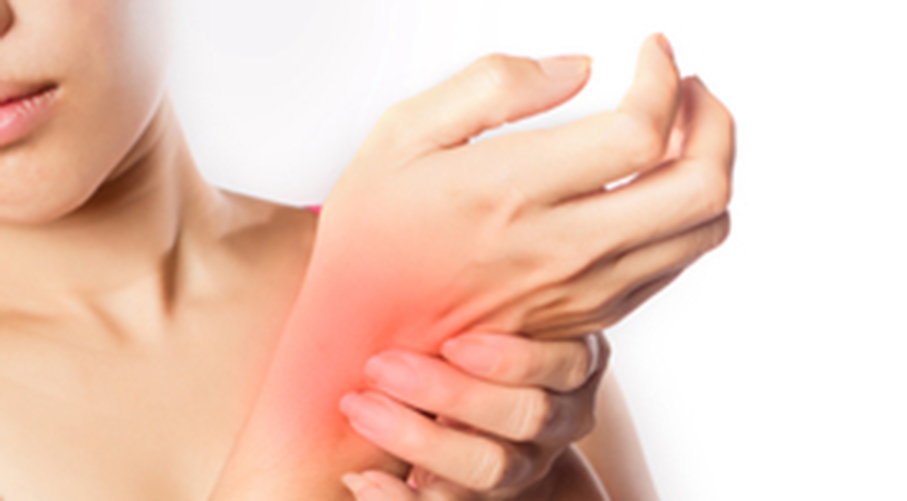
Importantly, Mums may be more susceptible because of the hormone Relaxin. During and after pregnancy, our bodies produce the hormone Relaxin. This helps prepare our bodies by relaxing and softening our musculoskeletal system. This includes our ligaments, bones, synovium, muscles, and tendons in our bodies. Whilst being a necessary and naturally discharged hormone, relaxin may increase our susceptibility to developing repetitive strain injuries such as Mommy’s Wrist.
Preventing Mommy’s Wrist
Practice Picking Up and Holding Babies in Different Ways
A potential cause of repetitive strain injury in the wrist is the frequent picking up of the baby. This is done often times with the thumbs hooked under the baby’s armpits. Cradling the baby’s head and neck between the thumb and index finger of an open palm may also cause strain in the extensor tendons of the thumb and wrist. Over time, these motions causes strain to the thumb and wrist, leading to Mommy’s Wrist.
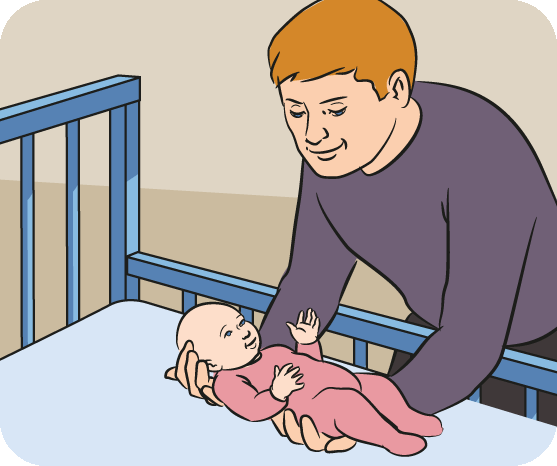
To prevent Mommy’s Wrist, try avoiding these actions. Try picking babies up with different techniques. One suggestion is to scoop the baby’s head and neck with one open hand whilst using the other hand to scoop the baby’s bottom. This action may put less strain on the wrist and thumb tendons.
Practice Hand Exercises and Physical Therapy
- Thumb Lifts
Place your hand on a flat surface with your palm facing up and your thumb extended away from your palm. Gently bring your thumb into your palm and back out again. Repeat 8 to 10 times, several times a day. - Passive Thumb Flexion
Hold your hand out with your thumb up and your pinky down, as if to shake someone’s hand. With your opposite hand, gently bring your thumb into your palm and hold for 15 to 30 seconds. Repeat 10 to 15 times, several times a day. - Finkelstein Stretch
Again, hold your hand outstretched with thumb up and pinky down, as if to shake hands. Keep fingers out long or make a fist. Use your opposite hand to gently point your fingers or knuckles toward the ground. You will feel a stretch in the tendons that join your thumb to your wrist. Hold for 15 to 30 seconds and repeat 4 to 5 times, several times a day.
Treating Wrist and Thumb Pain Caused by Mommy’s Wrist
Rest and Ice. Not always possible for busy new Mums
As a primary approach, rest may help relieve pain associated with the overworked tendons. Additionally, ice applied to the affected area may reduce inflammation as well as aiding the pain sensitivity by numbing pain signals. Ice may be applied several times throughout the day for 10- to 20-minute sessions. It is important to protect the skin and the baby from the cold temperatures of the ice.
Altering habits. Picking Up and Holding Babies Differently
A second course of action for treating and relieving Mommy’s Wrist is activity modification. This may be achieved by reducing or avoiding actions that aggravate the radial side of the wrist such as texting or playing an instrument. Additionally, changing the modality used when picking up and holding babies may reduce the aggravating action on the overused tendons. Furthermore, the condition of Mommy’s Wrist may be somewhat relieved by practicing proper ergonomics, pacing activities, reducing force, and minimising repetitive actions.
Physical Therapy and Hand Exercises
Your doctor may refer you for physical therapy to treat Mommy’s wrist. A qualified hand therapist will work with you to institute appropriate hand and wrist exercises and several treatment modalities to help relieve pain and inflammation.
Use a Wrist or Thumb Splint
Furthermore, the hand therapist may fabricate a custom-moulded splint to rest and immobilize the thumb and wrist whenever appropriate. Such splints are usually made of rigid thermoplastic which are not to be worn when handling your baby as it may cause inadvertent injury. In place of the rigid splint, a soft brace may be worn during the times when handling the baby.
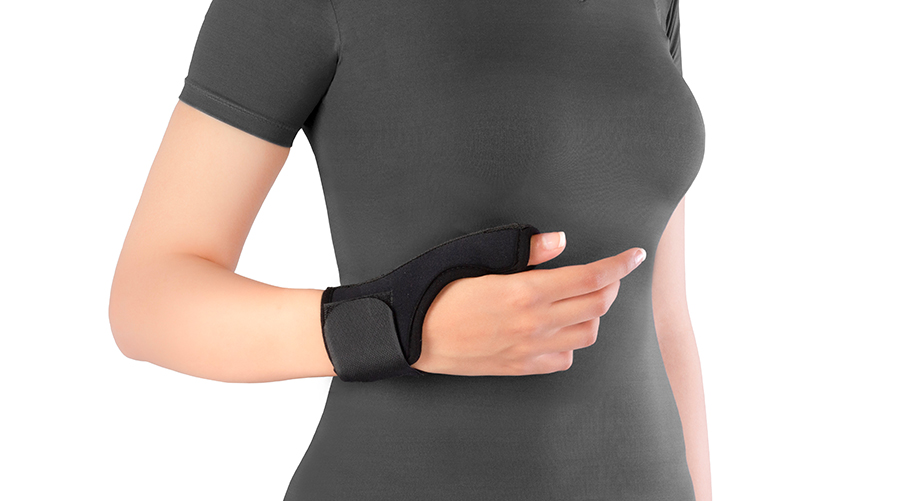
Anti-inflammatory Medication
Anti-inflammatory medication is often contraindicated in the case of pregnancy and for nursing mothers. Check with your healthcare provider for safe or alternative options.
Corticosteroid Injection
A pain-relieving and anti-inflammatory injection may be the appropriate course of action when all other measures have failed.
Surgery
Surgery surgery may be the best course of action for Mommy’s Wrist. The operation is a minor, day surgery procedure. It involves decompression of the tendon sheath and enlarging the retinacular sheath to prevent tendon subluxation. For more information regarding treatment options, visit the DeQuervain’s Tenosynovitis Page on our website.
Final Thoughts
Mommies are more susceptible to Mommy’s Wrist. It is important to obtain an accurate diagnosis to establish a personalised treatment plan that works for you. At CHARMS, your comprehensive and expert treatment encompasses all aspects that we believe are crucial for your complete recovery. If you are a new Mum with severe wrist pain, let us help bring the joy back into your role as Mommy. You may give us a call, visit one of our locations, make an inquiry, or make an appointment.to consult one of our hand and wrist specialist doctors.